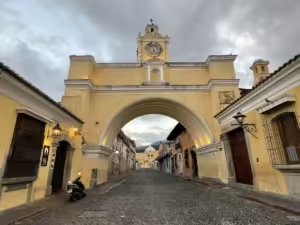Guatemala is a country that has almost everything an adventurous traveler might desire. Do you want highland treks along the slopes of smoldering volcanoes? Do you want to wander cobblestone streets, drinking coffee in front of grand colonial edifices? How about scaling ancient ruins to peer above humid jungle canopy? What about witnessing the modern traditions of the descendants of the people who built those ruins? In that case, my friend, you want to travel to Guatemala.
Guatemala is the most populous country in Central America. It is the Mayan heartland, and formed the core of the ancient Maya civilization. Later on, the Spanish conquered the territory, and Guatemala formed part of the vice-royalty of New Spain. After independence, Guatemala formed part of the Mexican Empire and the Republic of Central America before settling into the borders we know today.

What to Know Before Traveling to Guatemala
Guatemala has long been a staple on the backpacker trail. As such, it has a pretty well-developed tourist infrastructure. However, it’s also still a developing country. Guatemala isn’t the sort of place to travel if you’re the resort and packaged tour type. Before you go, there are a few things you should know.
Guatemala Can Be Cold
We went to Guatemala expecting nothing but warm, tropical bliss. The lowland jungles and the coasts are plenty hot and humid, but the highlands are a different story. Quetzaltenango, for example, sits at 2,334 meters (or 7,656 feet). Evenings can get surprisingly chilly. Make sure to at least pack a sweater or a light jacket. Also, keep in mind that hot water is a rare luxury when you travel in Guatemala.

Guatemala is the Land of the Maya
Your poorly written high-school world history textbooks may want you to believe the Maya disappeared long ago. They didn’t. In fact, the Maya are alive and well. You can find them in the towns and villages of Guatemala.
More than one million people still speak K’iche’, which is Guatemala’s second most common language. In fact, there are over 22 different Mayan dialects spoken in the country. Don’t worry, though, because most Guatemalans also speak Spanish. You can also get by with English if you stick to the more touristy areas. But Spanish is better. Learn some Spanish. The cities of Antigua and Quetzaltenango are actually excellent places to take lessons.
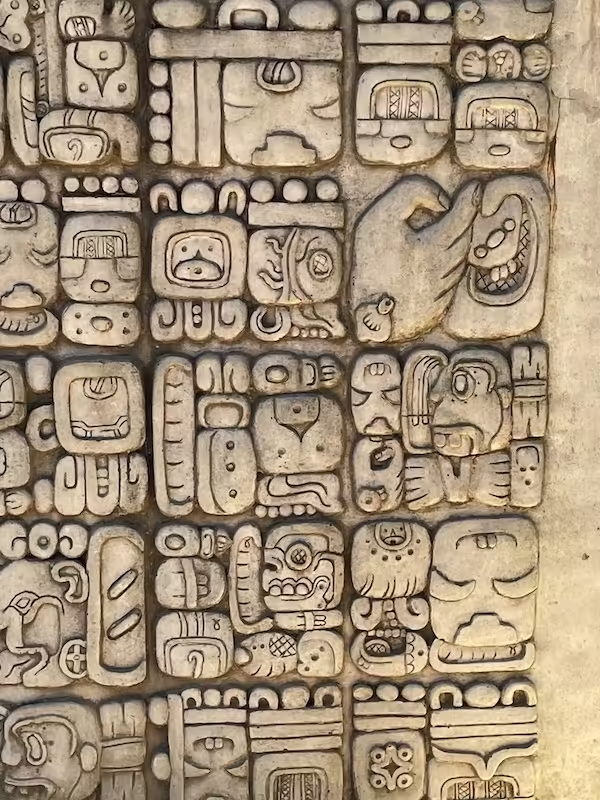
Guatemala Has Suffered Over the Years
Guatemala has had a turbulent past, to say the least. In 1954, the United States and its good buddy, the United Fruit Company (now Chiquita Banana) backed a military coup that overthrew the democratically elected president. A period of brutal military dictatorship, war and chaos followed.
Guatemala’s civil war, where leftist guerillas fought against the government, lasted from 1960 t 1996. Numerous human rights violations were committed during this time, and the government has been accused of genocide against the indigenous population. The war is now over, thankfully, but it takes some time to recover from that sort of thing. Unfortunately, post-war Guatemala has been plagued by government corruption, brutal economic inequality and gang violence.
Currently, or at least as recently as 2023, Guatemalans are out on the streets protesting against this endemic government corruption. We visited just before the protests, but you could feel the tension in the air.
These issues likely won’t affect you personally on your travels to Guatemala, but it’s good to be aware.
If you want to read more, I suggest checking out the books Bitter Fruit: The Untold Story of the American Coup in Guatemala by Stephan Schlesinger and Stephan Kinzer and I, Rigoberta Menchú: an Indian Woman in Guatemala by Nobel Prize winner Rogoberta Menchú.
The Top Travel Destinations in Guatemala
On to the fun stuff. Despite the chaos that’s plagued its history, Guatemala is still a fantastic place to travel and filled to the brim with amazing destinations. Very few other countries contain as much natural, architectural and cultural beauty.
Antigua
If you’re only going to visit one place in Guatemala, it’ll probably be Antigua. The city is a UNESCO World Heritage site and one of the most elegant of Latin America’s many colonial cities. Antigua gained its graceful colonial buildings and cobblestone streets as capital of the Captaincy General of Guatemala during Spanish imperial rule. Over the years, earthquakes and volcanic eruptions kept destroying the city, and the Spanish kept rebuilding. That is, until they got fed up and moved the capital to Guatemala City.
Today, Antigua is the unofficial capital of Guatemalan tourism. Coffee shops, hostels and tour agencies now sit in the stately former homes of Spanish colonists. Affluent locals rub elbows with American volunteers and European backpackers cramming for their Spanish classes. Mayan women sell souvenir trinkets in the parks and plazas. And at night you can see the red glow of lava from nearby Volcán Acatenango.
Yes, parts of it can seem a bit like a tourist trap. But there are still plenty of narrow colonial alleyways to wander and ruined cathedrals to explore.
During Holy Week, aka Semana Santa, Antigua explodes with visitors and festivities. Faithful Catholics fill the streets in solemn processions. Neighbors design colorful “alfombras” or carpets of dyed sawdust arranged in intricate patterns and designs. Hotels get fully booked.
If you can’t make it for Semana Santa, don’t worry. You can still get a taste of the holiday, as people tend to start celebrating about a month ahead of time. Whenever you travel to Guatemala, Antigua will likely be your first stop.
Check out more about Antigua here: Wandering in Antigua: A Guide to Guatemala’s Most Touristed City

Lake Atitlán
If it weren’t for Antigua, Lake Atitlán would be Guatemala’s number one tourist destination. The lake is surprisingly large and is surrounded by steep cliffs and volcanos. Various villages border the water, some still hold their authentic Mayan character, while others are quite over touristed. Most are worth a visit. The Mayan areas are especially interesting, and the people maintain their language, traditions and radical spirit.
You can swim or kayak on the water, hike between villages or just soak up the local ambience. Some tour guides offer day trips from Antigua, but Lago Atitlán deserves at least a few days on its own.
Just be warned: the lake tends to attract a lot of hippies.
Discover more about Lake Atitlán here: Diving into Lago Atitlán: Travel to Guatemala’s Most Beautiful Lake

Tikal
After visiting contemporary Mayan culture in Lake Atitlán, you can jump into the ancient Mayan world. And Tikal is the mother of all Mayan ruins. It’s truly impressive, and worth both the tourist hype and the cameo in Star Wars. Massive stone pyramids rise above the jungle, while birds chirp in the canopy and monkeys swing from the tree tops overhead.
A trip to Tikal is a pain-in-the-ass overnight bus from Antigua, but a must-see destination when traveling to Guatemala. Funnily enough, it’s actually easier to get to from Belize. But, don’t let the long bus ride put you off. Tikal is worth it. The quaint, nearby town of Flores also makes for lovely day.
The important thing is to make sure you get to Tikal early in the morning when the park opens. You’ll not only avoid the heat, but also the crowds. You also might have the opportunity to witness the magic of watching morning mist clear as the sun rises.
Read about my old journey to Tikal here: Tikal: Wandering Through the Mists of Guatemala’s Most Iconic Mayan Temples
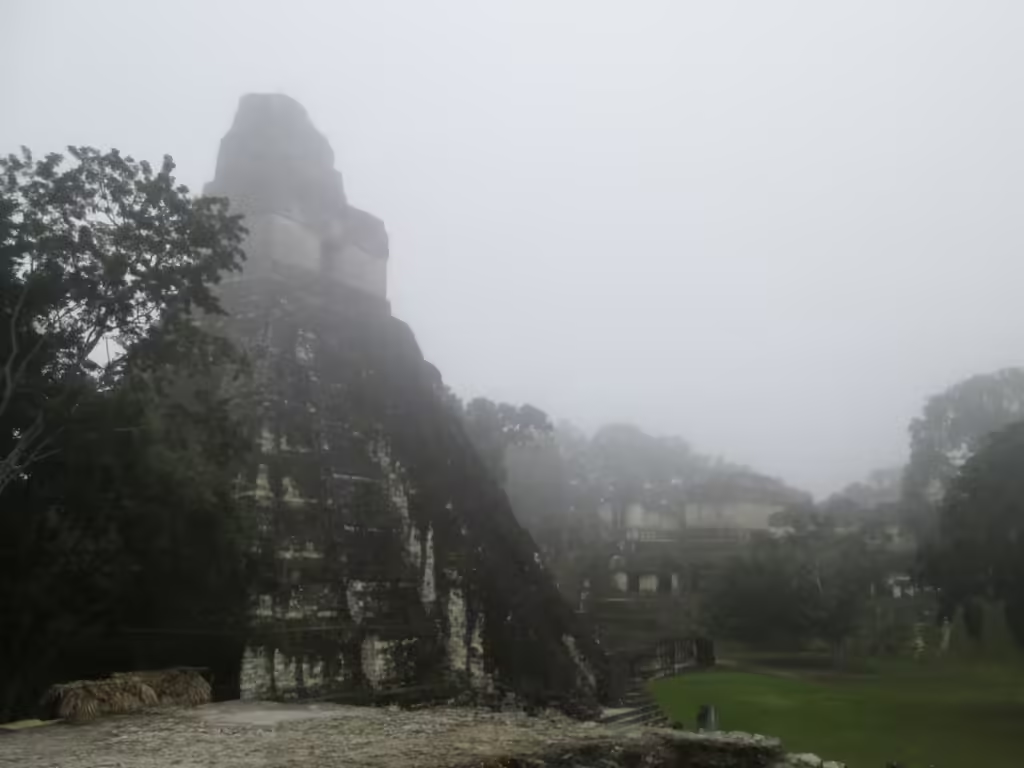
Semuc Champey
For more jungle action, look to Semuc Champey and the nearby town of Lanquin. The limestone jungle pools of Semuc Champey are absolutely gorgeous and one of Guatemala’s top attractions. They’re also very crowded.
Expect to spend what feels like hours sweating on the humid jungle trail that leads up to the viewpoint looking over the pools. You’ll have to wait in line while everyone gets their selfies. Some people might even require a costume change or two. The views of the misty jungle cliffs and the turquoise water below are totally worth it.
Afterwards, you can hike down and go for a swim. The nearby town of Lanquin offers caves, chocolate farm tours, and only a handful of restaurants. Public transportation means hanging off the back of an old pickup truck on a long bumpy road.
Read about Semuc Champey here: Is Semuc Champey Worth It? The Real Story Behind Guatemala’s Tourist Hot Spot

Rio Dulce
Also set in the jungle, Rio Dulce is Guatemala’s best place to do nothing. That’s not to say there isn’t a lot to do. The river flows through lowland rainforest, full of birds and lizards and jungle insects. You can kayak, swim, take a boat ride through a nearby narrow canyon or bathe with the locals under a hot spring waterfall. Or you can just kick back and relax in a hammock.
There are a number of jungle lodges on the river, remote place where you’ll have to hire a boat from town. Some of these lodges can actually be a great deal, and where else can you fall asleep to the sounds of rainforest insects chirping just outside your mosquito net?
Rio Dulce is also the gateway to the fascinating Garifuna enclave of Livingston.
Read more about Rio Dulce, including how to pronounce it, here: Rio Dulce: Relaxing and Exploring on Guatemala’s Sweet River
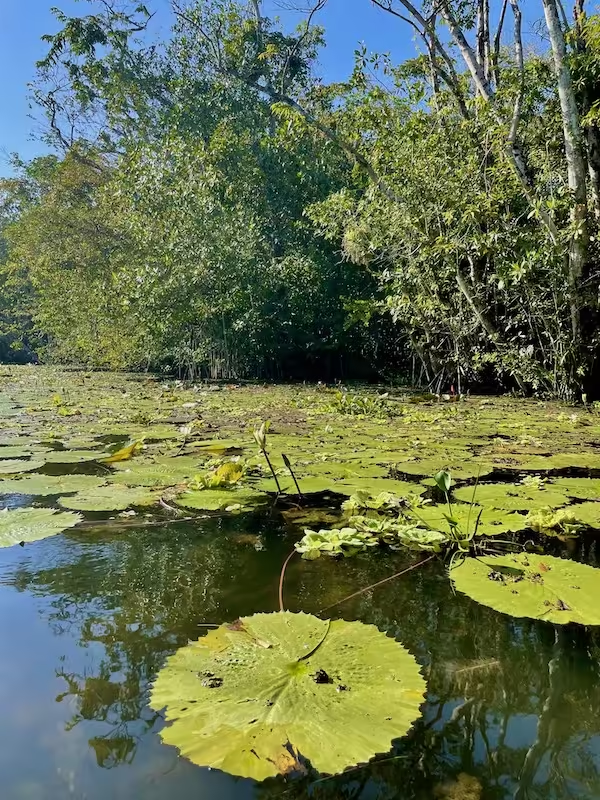
Getting Off the Beaten Path in Guatemala
Most people traveling to Guatemala will spend their whole trip in Antigua, Lago Atitlán and Tikal. Those three places are great, but they’re just a taste of what Guatemala has to offer. If you have more time and are feeling a bit more adventurous, you can break off the tourist trail and check out some of Guatemala’s lesser-known destinations. For example…
Cobán
The city of Cobán doesn’t have much to offer. It’s a bit dreary and not the sort of place you’d want to be stuck after dark. However, there are two fantastic day trips that make Cobán a must-see place for bird and flower lovers. And both are an easy chicken-bus from town.
First off, is the Biotopo del Quetzal, where you have a chance to see the famous Resplendent Quetzal, national bird of Guatemala. Even if you don’t get to see the quetzal, the park has some lovely trails that wind through the cloud forest. Closer to town is the Orquigonia, a sort of botanical garden that rescues orchids from deforestation.
Check out more about Cobán here: Quetzals to Orchids: A Travel Guide to the Birds and Flowers of Cobán, Guatemala
Just make sure you don’t confuse “Cobán” which is in Guatemala, with “Copán” which is the home of large Mayan ruins just over the border in Honduras. However, since you’re already in Guatemala, why not dip over to Honduras and check out the ruins and more? Copán Ruinas: Visiting Mayan Ruins and More in Honduras

Quetzaltenango
While Quetzaltenango, or Xela as it’s often known, isn’t completely off the tourist trail, it’s nowhere near as popular as Antigua. That’s a bit of a shame, since Guatemala’s second city has a lot to offer. It’s a fantastic base for nearby volcano hikes and visits to indigenous villages. The city itself has its own sort of rundown charm. It’s nowhere near as polished as Antigua, but it definitely feels more authentic.
While in Xela, you can arrange hikes to the tops of smoldering volcanoes and tranquil green lagoons. You can also visit various nearby villages, and spend the evening eating street food in the town square. Quetzaltenango is also home to numerous Spanish schools and what might be Guatemala’s nicest cemetery.
Find out about Xela’s cemetery and more here: Discover Xela: A Guide to the Best Things to See and Do in Quetzaltenango

Guatemala City
It might seem strange to list the capital as an “off the beaten path” destination, but most travelers avoid Guatemala City and head directly to nearby Antigua. This works if you’re short on time, but Guatemala’s bustling capital and Central America’s largest city deserves at least a couple nights.
Downtown is a collection of gritty, rundown colonial architecture and bustling pedestrian streets. You’ll see marimba players and armed guards stationed in front of Chinese restaurants. This is the real Guatemala, where most of the residents live. Things get sketchy after dark, but during the day it’s just fine.
If you are interested in the ancient Maya, Guatemala City is also home to one of the best museums of Mayan art and culture in the world. The Museo Popol Vuh is located on the grounds of a University and is a fantastic introduction to the ancient Maya world.
Read more about Guatemala City here: Is Guatemala City Worth Visiting?

The Mayan Ruins of Iximche
Everybody knows about Tikal, and lots of people know about Copán in nearby Honduras. Almost nobody has heard of Iximche. The ruins aren’t nearly as large or as impressive as those more famous Mayan sights, but what Iximche lacks in architecture, it makes up for in culture. The site is still regularly used by local people for Mayan religious and spiritual ceremonies.
You’ll be glad you hired a guide for Iximche, even if you’re normally the kind of person who likes to wander ruins independently. The guides are usually local indigenous folks who can give you tons of details about both ancient and modern Mayan culture. You also might learn the proper way to climb a pyramid.
Iximche is a day trip from Antigua.
Safety Tips for Traveling in Guatemala
Guatemala, like much of Central America, has a bit of a bad reputation. People, especially in the US, view it as a corrupt, violent, banana republic that’s full of gangs and crime. The truth, of course, is more complicated. Yes, Guatemala has more than its fair share of problems. Many of them caused, directly or indirectly, by the United States.
Thankfully, those problems rarely affect tourists. For the most part, Guatemala is a perfectly safe travel destination.
The best advice I ever got was from a former Guatemalan gang member. “The problems are between the gangs, tourists are invisible to them,” he said. “Except when you start walking around asking ‘hey, got any weed? Got any cocaine?’”
There you have it. Keep your wits about you and don’t buy drugs. Bad things can happen anywhere, but chances are you’ll be fine.
I have some more thoughts about safety and crime in Central and South America. Read them here: Rethinking Travel Safety and Crime in Latin America
Know the Safe and Caution Areas
I have personally wandered back from the bar in Antigua with zero problems. Lake Atitlán, Tikal and other tourist hot-spots are also very safe. Again, things can happen anywhere, but I felt safer in these places then I do back home in the United States.
Other, less popular, cities like Guatemala City and Quetzaltenango have some pretty sketchy areas that are best avoided by tourists. Luckily, I’ve found that the local people are generally very helpful. People want you to be safe and have a good time in their country.
You can ask at your hotel or hostel and they’ll tell you what areas to avoid. I’ve even had strangers come up to me on the street and warn me not to go that way. One guy even walked me back to the main square when I accidentally wandered into a rougher neighborhood.
When in doubt, stick to places where you see other people out and about. Nobody’s going to mug you on a street full of witnesses.
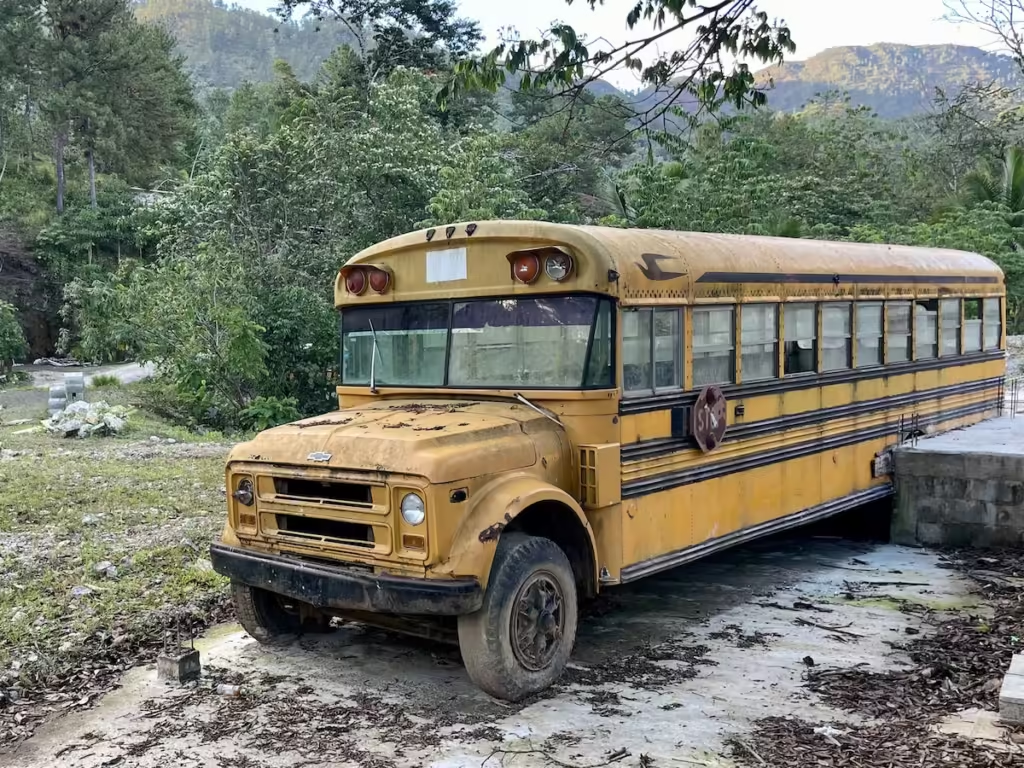
Transportation Safety While You Travel in Guatemala
Most public transportation in Guatemala is on the so-called “chicken buses”. These are old school buses that have been converted into public buses. They’re generally cheap and effective means to travel around Guatemala. However, avoid them in cities around Guatemala City (including Antigua). The chicken buses are often targets for theft. Not because of the tourists riding them, but because the drivers carry a lot of cash and the buses make frequent stops.
You can use one of the millions of tourist shuttles available in the country instead.
I’ve also heard warnings about taxis, but to be honest, we never had any trouble. At most you might get charged a little more than the going rate but nothing major. You can ask your hotel or a restaurant to call you a cab if you’re worried.
Petty Theft and Muggings
While you aren’t likely to get shot, you might get robbed. Pick pocketing can be an issue in crowded markets. The Semana Santa holiday in Antigua is a huge draw for pick pockets, who target locals and tourists alike. Keep your valuables in a zippered pocket or fanny pack.
You also want to be careful on hikes and journeys outside of the cities. Tourists have been known to get mugged on the popular Cerro de la Cruz hike in Antigua and Indian Nose in Lake Atitlán. Cerro de la Cruz is fine in the day, but best avoided as night falls. Indian Nose can be done with a guide no problem. Guides are helpful hiking anywhere in Guatemala. Not only do they know the safe routes, but it’s a good way to put money in the hands of local people who need it.
Leave your passport in your hotel or locked up in your hostel. Don’t flash fancy jewelry or wads of cash. If you do get mugged, just give up your valuables. Your life is more valuable than any cell phone.
Beware the Stray Dogs
Crime is the big concern, but I would argue that dogs pose a far greater danger while traveling in Guatemala than criminals. Most of the Guatemalan people are super friendly and helpful. I wish I could say the same about the dogs.
Guatemala is full of stray dogs that are not friendly or helpful at all. Sometimes they just want to hike up the volcano beside you in the hopes you’ll give them some food. Other times, these dogs are vicious hellhounds who make Cujo seem like a cuddly pup.
We had a friend in Antigua who got attacked by dogs on her way to Spanish class. Luckily, they didn’t do much worse than rip the leg of her pants. We’ve heard of other people who’ve gotten bitten and had to go to the hospital for emergency rabies shots. Not a fun way to spend a trip.
If you find yourself tormented by one of these angry street dogs, there are a few things you can do to avoid being bit. Never, ever, approach or try to touch a strange dog. Avoid making eye contact. If a dog is growling and biting, never run. Instead, try to remain calm, turn to the side and walk slowly away. If you have to, throw some rocks near the dog and try to scare it off. Worst-case scenario, you may have to try and block an attack with your backpack or stick.
Luckily, I’ve never gotten past the throwing rocks stage. It still can be quite frightening.

Beware the Crazy Drivers
The other big safety issue in Guatemala is the traffic. Crossing the street here can be an adventure. Especially if you’re from a country where pedestrians have the right of way. Never assume you have the right of way when you travel in Guatemala.
There are also times when you’ll be stuck as a passenger in a vehicle with a crazy driver. This can happen on the cheapest chicken buses or the most expensive tourist shuttles. Drivers pass and overtake one another with little regard for oncoming traffic. And the worst part is that a lot of vehicles don’t have seat belts.
I never saw any actual accidents while traveling in Guatemala, but that didn’t make the driving any less scary.
Also, don’t think that crazy driving is limited to just the roads. We took a boat trip in Livingston that scared the shit out of us. The afternoon waves were nearly as large as the boat itself, and the driver kept speeding over them, causing the boat to leap into the air. It was a good reminder to always wear a life jacket.

Ethical Travel in Guatemala
As tourists, we want to keep our selves safe, but we also have a certain responsibility to behave ethically. Especially as tourists coming from the Global North and visiting developing countries like Guatemala. It’s important that we think about how we travel and how our travel can affect the local communities we’re visiting.
In short, don’t be a jerk.
Respect Indigenous Culture
Yes, those Mayan women in their traditional dresses might look fantastic on your Instagram feed. Resist the urge to snap a photo. The Mayans in traditional clothing are not props or actors. They are living, breathing, human beings. At the very least, make sure you ask permission before taking a picture.
This goes double if you’re ever lucky enough to witness a traditional, religious ceremony. Keep a respectful distance and again, no photos unless you’ve got permission.
Remember that the Maya of Guatemala have survived multiple genocides. They’ve been able to maintain their unique culture and traditions over countless centuries. The least you can do is show them a little respect.

Support Local Businesses
As a First World tourist, our money goes a lot farther. A few dollars to us can mean the world to a Guatemalan. As such, it’s important choose where you spend your money wisely. Try and stay at locally owned hotels rather than big chains or expat Airbnbs. Eat at local markets or restaurants instead of getting American fast food. Hire local guides for hikes and excursions. All of these things can go a long way in putting money towards the local communities that really need it.
Also, don’t complain when things cost a little bit more for you. Prices are often cheaper for locals at museums or parks. As tourists, we have more money, we can afford to pay it, so why make a fuss? Chances are you’d just spend the money on something stupid back home.
Should You Volunteer while Traveling to Guatemala?
The volunteer question is a touchy one, and one I can’t claim to have any definitive answers for. There are a ton of well-meaning people who want to volunteer while they travel to Guatemala; paying to work in orphanages, building schools or maybe teaching. Let’s put aside (possibly legitimate) arguments about “White-Savior” complex and assume these people have the best intentions. Sometimes, though, those good intentions end up being paving stones on the road to hell.
Volunteering in Guatemala (and elsewhere in the developing world) is a huge business. Oftentimes, unskilled volunteers who are hired for construction and teaching jobs get put in positions where they have little to no training or experience. These volunteer jobs often take much needed work from local people who need it. And there are terrible horror stories from some volunteer orphanages.
Considering the ethical minefield of voluntourism, we decided not to do any volunteering when we traveled to Guatemala. I’m not saying that you shouldn’t either. I’m just saying do your research. You don’t want to end up causing more harm than good. Volunteer with a reputable organization and only do work you’re qualified for.
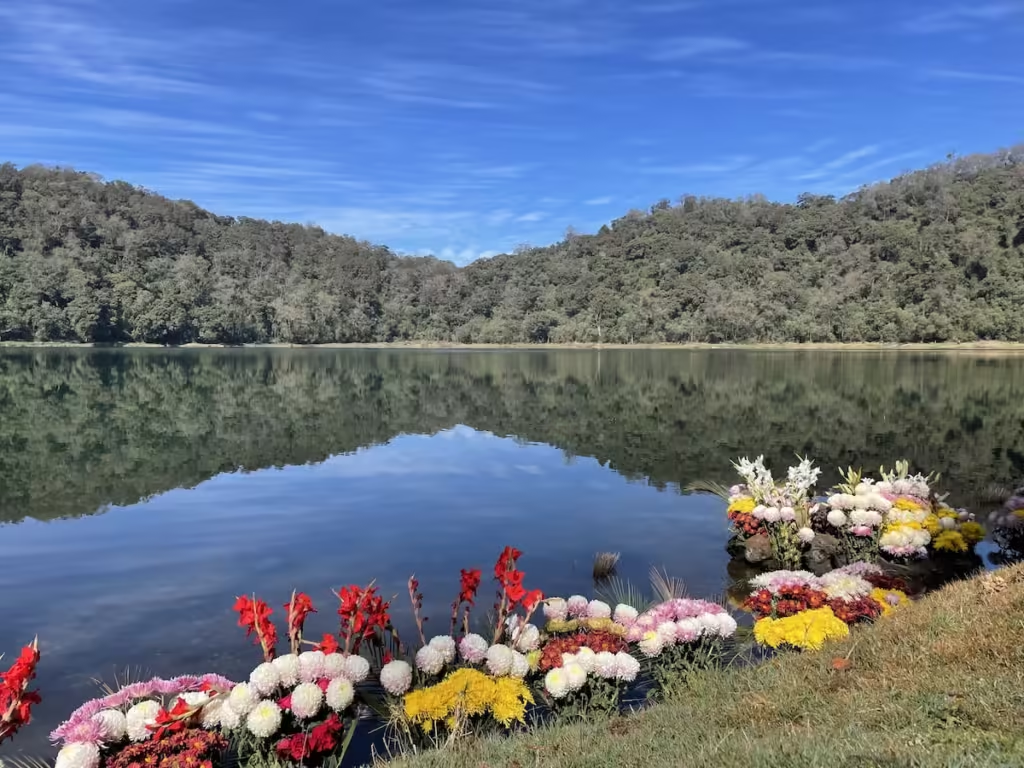
Guatemala is a complex, diverse country. It’s filled with fantastic natural beauty and a great wealth of diverse, interesting culture. It is the Maya heartland, a blend of ancient ruins and modern rituals. It’s also a great place to visit. Travel to Guatemala and prepare to have your perspectives and stereotypes rattled. And don’t forget to have fun.
Useful Websites for Traveling Guatemala
As much as we might long for the days when you could show up to a town with nothing more than a beat-up guidebook and a sense of adventure, today much of traveling involves being glued to our phones making bookings. I’ve compiled some helpful apps and websites below that at least help make those bookings more convenient so you can spend less time staring at your phone and more time exploring at your surroundings. Some of these sites are affiliate links that give me a small commission at no cost to you if you chose to book through them. All of them are sites I’ve used personally and have no problem recommending.
Just be sure to do your due diligence as much as possible. Only hire local guides and try as much as possible to stay in locally owned hotels and hostels so that your hard earned travel dollars actually go to support the local economies of the places you visit.
Booking.com is basically the world’s only hotel booking website. They have hotels, guesthouses and vacation rentals all over Guatemala.
Hostelworld is the go-to site for booking hostels. If dorm rooms and shared bathrooms are your thing, you’ll find hostels all over Guatemala.
Get Your Guide offers tours and activities all around the world. Unlike some other sites and apps that do the same thing, you can actually find some reasonably priced deals here.


